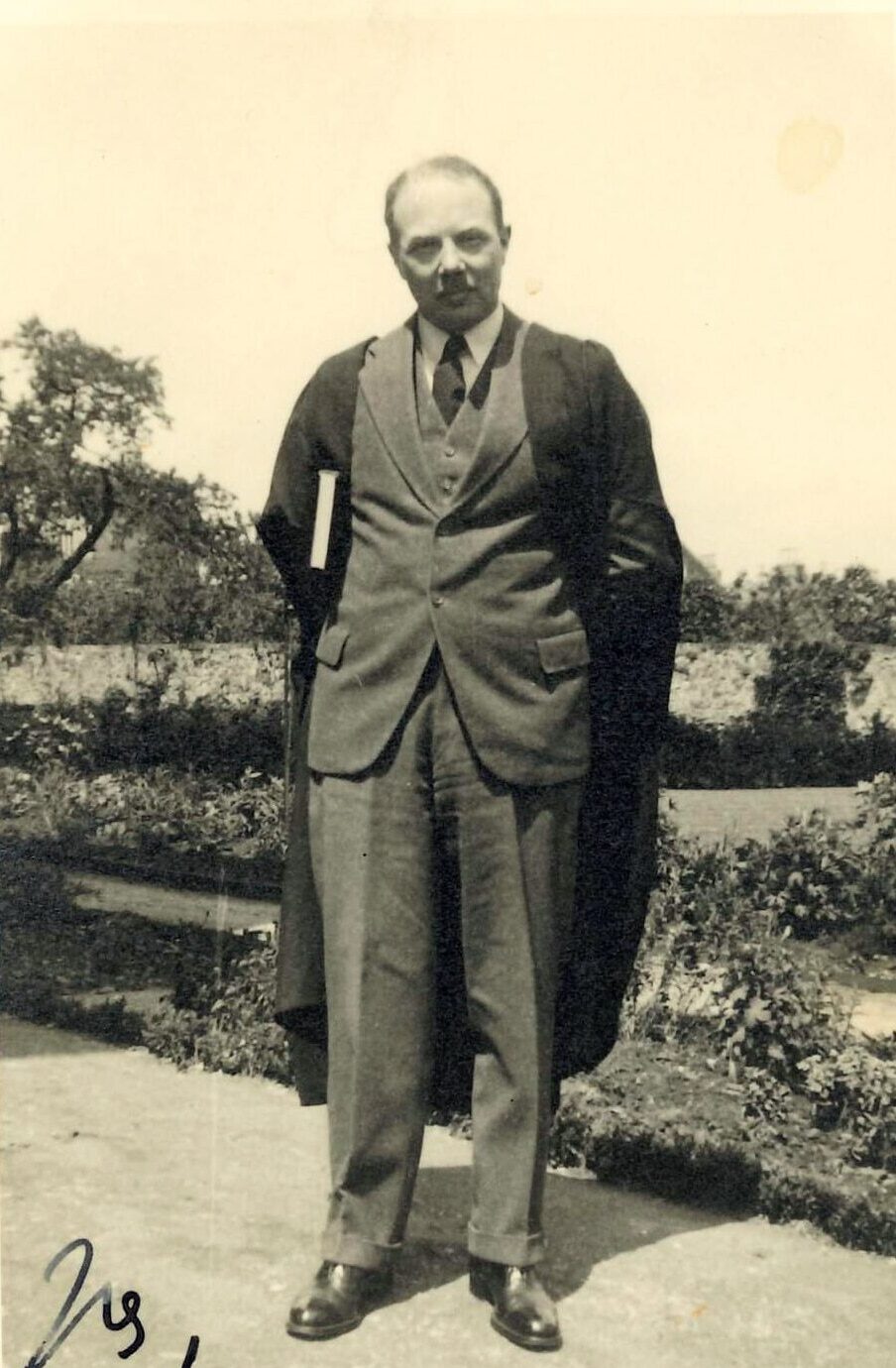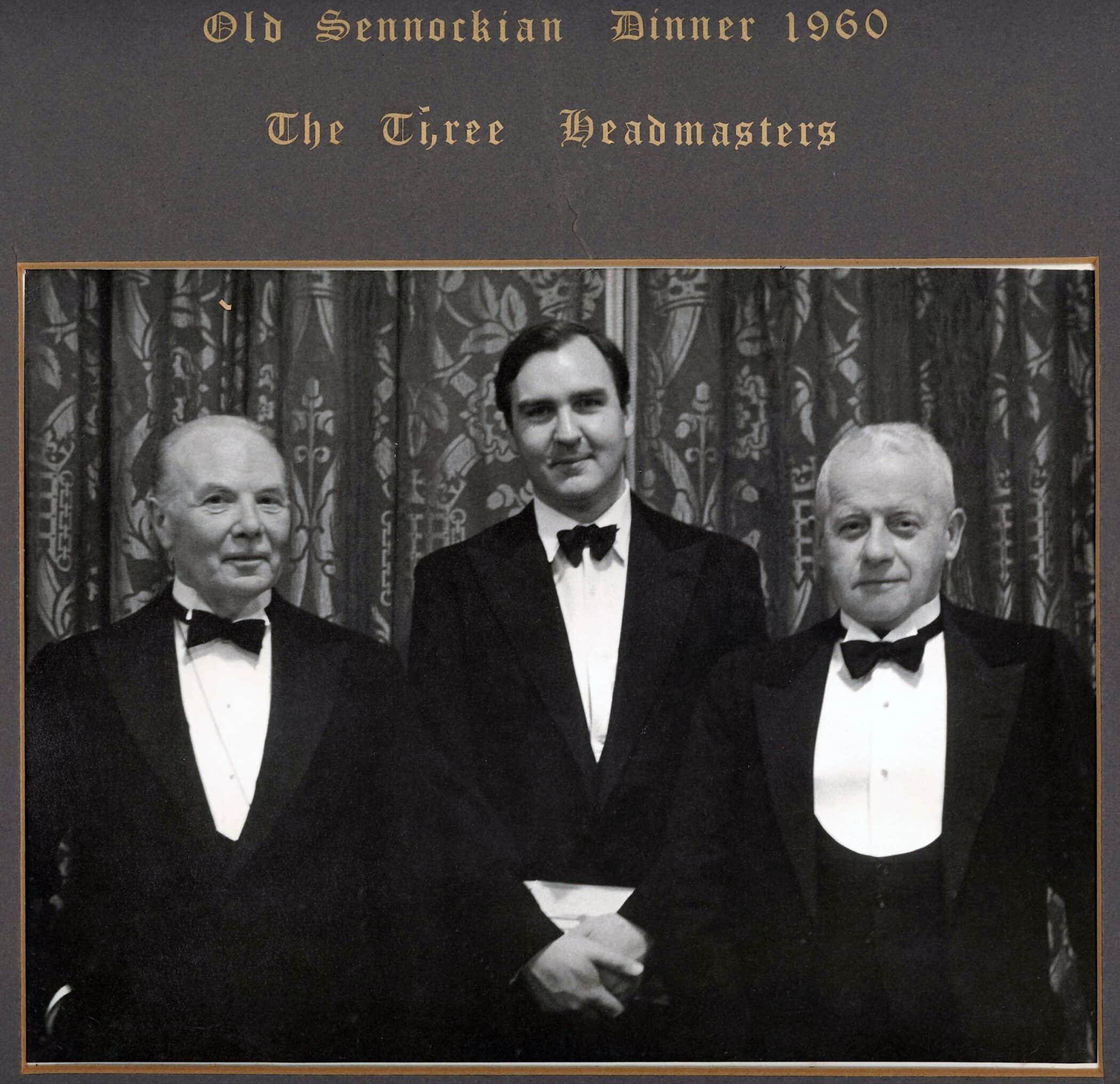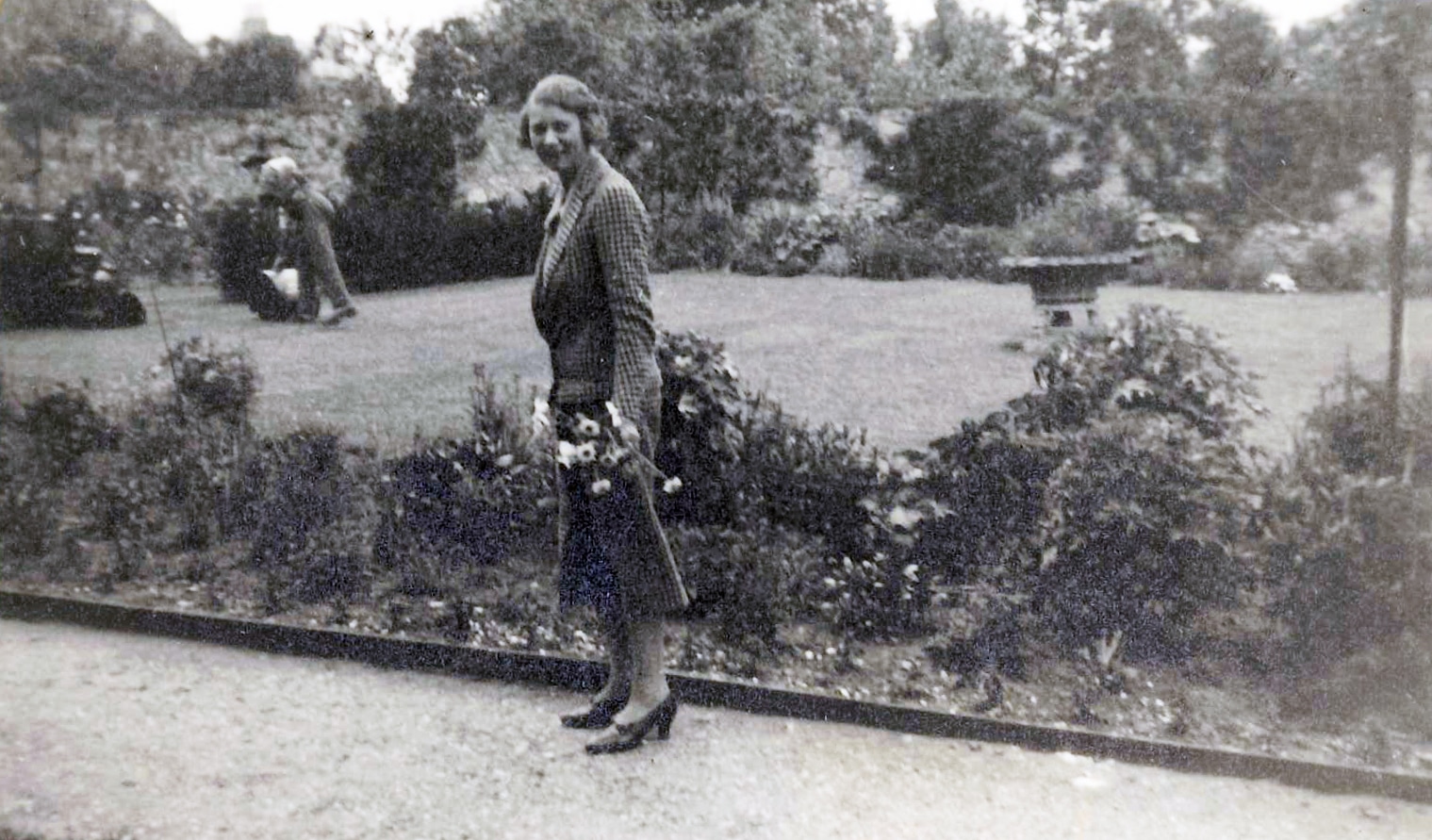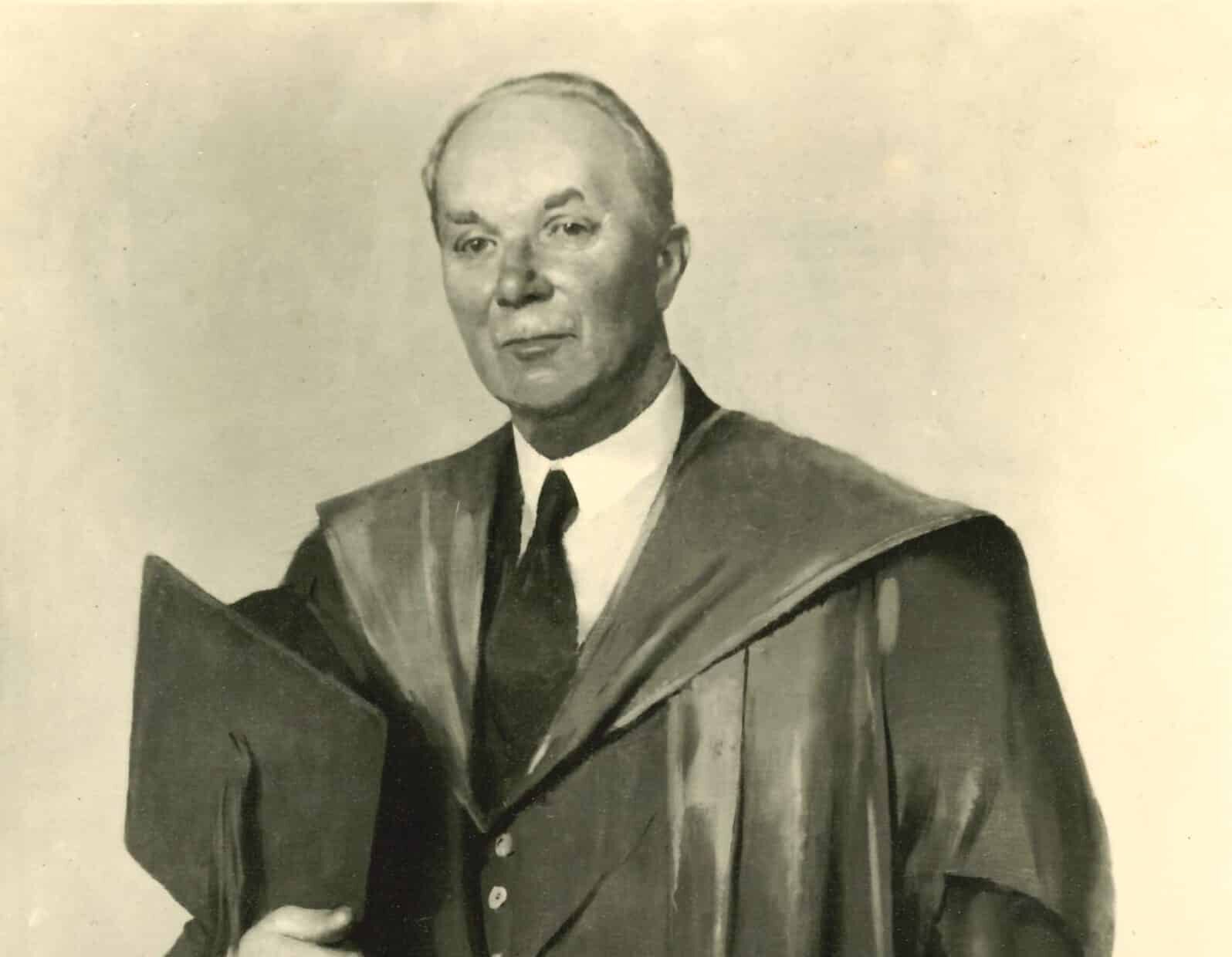Summer 2025 marked 100 years since the appointment of one of the most important Headteachers in the history of Sevenoaks School.
James Higgs Walker’s vision for the school’s development and his collaboration with one of its most generous benefactors proved crucial in providing the bedrock for today’s leading educational institution.
The Sennockian of July 1925 extended “a very hearty welcome” to James Higgs Walker as the successor to Geoffrey Garrod, who had only been in post for six years, in effect a caretaker Head, who had attempted to stem the decline in the school’s fortunes following the disastrous impact of the First World War – “everything scholastically and domestically was in chaos” [ibid]. Garrod had begun the regeneration successfully, but Higgs Walker still had an uphill task on his hands to continue and complete it.
James Arthur Higgs Walker was born on 31 July 1892 in Bromsgrove to William and Fanny Higgs Walker. His and his two sisters’ upbringing was comfortable – their father was a prosperous nail and chain manufacturer – and James was educated, as a boarder, at Repton. In 1912 he entered St John’s College, Oxford where he gained an MA in History, albeit interrupted by war service. Excelling as a fast bowler, he captained the First XI at St John’s and played cricket at county level for Worcestershire.
He enlisted on the outbreak of war in 1914 and served as a Captain in both the Worcestershire Regiment and the North Staffordshire Regiment, seeing service in the Middle East and Italy. In 1919 he joined Oundle as a History teacher and housemaster; six years later, in 1925, James Higgs Walker arrived at Sevenoaks.
James Higgs Walker’s aim in his new role was not only to repair the decline in the school’s fortunes but also to raise them and transform it from a local grammar school into a national Public School. He did this using his three main passions in life – Cricket, History and Drama. In essence he expanded the school’s curricula – academic, co-curricular and sporting and raised standards in all three. By introducing elements such as the House system, House and School officials, publications and competitions, clubs and societies, concerts and entertainments (the school orchestra was formed under him) and making subtle nods to the school’s history such as the Quincentenary Celebrations of 1932 he introduced public school ethos to Sevenoaks.
Within ten years of taking up his post Higgs Walker had been elected to the Headmasters’ Conference and, as a speech at the 1935 Old Sennockian Dinner observed, he “had enhanced the school’s reputation beyond all believing. In numbers of scholars, in status and in prestige, the development had been remarkable…” [Sennockian July 1935].
Behind his back he was known as ‘Pigs Trotter’, or simply ‘Jimmy’; “he had tremendous presence and was impressive in school assembly…but he was not pompous and he had a sense of humour” recalled Robin Everitt (OS 1942). He understood the transformative effect of a rounded education – “education does not consist of forcing boys into a mould, but in providing the machine that would suit the boy” [Brian Scragg, Sevenoaks School A History, 1993]; and encouraged access for all by his embracing of the County Places Scheme in 1946.
Apart from cricket, Higgs Walker is remembered by OS for his other passion – cars: the Silver Ghost Rolls Royce saloon known as ‘The Hearse’, “of mature dignity” [OS Newsletter 1980]; and the Doctor’s Coupe known as the ‘Ark Royal’.
It should also not be forgotten that he effectively steered the school through the tribulations of the Second World War. Contending with rationing, loss of staff, air raid and invasion precautions, and evacuated school children from London he ensured morale stayed high by maintaining school routine and traditions. As he himself said, “it can and should be said here that if standards declined (for they did, in Sevenoaks, as in every other school…) nothing of importance was allowed to die…my proudest memory is of boys, who having been suddenly awakened at the depressing hour of 2am descended to the Dining Hall and calmly continued their preps….”[At Honour’s Game, 1957].
Competent and inspired as Higgs Walker was in carrying out his vision for the transformation of the school, he could not have done it alone. It is almost incalculable the help and support he received from his Chair of Governors, Charles Plumptre Johnson; a “great benefactor who has rightly been called the Second Founder of this school” [Sennockian July 1938]. From the moment he arrived at Park Grange in 1911, Plumptre Johnson closely involved himself with Sevenoaks School, his near neighbour, and it became the object of his major philanthropic interests in young people and education. His first gift, in 1925, the flagpole in front of Old School was rightly likened to the “wand of a fairy godmother” [Sennockian April 1934]. Thereafter, his personal friendship with the Head, his financial assistance and his gifts in kind helped boost the school’s fortunes.
A second aide in Higgs Walker’s life was his wife, Mollie – they “worked as a strong team for the benefit of the school…[and] devoted the whole of their lives to it” [OS Newsletter 1990]. It was Mollie who was largely responsible for making Drama and, in particular, the annual play such an important feature of school life. It was she also who oversaw the prestigious social cachet of the Higgs Walker household as a “great conversationalist and wonderful hostess” [ibid]. The Higgs Walker’s only child, Bridget, was “a miniature version of ‘Mrs’ and definitely ‘off limits’ to other ranks” recalled one OS. In 1939 she married an eminent surgeon, Michael Harmer, in St Nicholas’ church; their daughter, Juliet, was a notable actress in the 1960s best remembered for fighting Diana Rigg in an episode of The Avengers.
The second longest serving Head of Sevenoaks School, James Higgs Walker retired in 1954, handing over the baton to his former pupil, Leonard ‘Kim’ Taylor. Mollie and he moved to Chelwood Gate in Sussex; his leaving present from the Old Sennockians was an oak door for the new house with the school seal carved into it. Even in retirement, the couple “were keen and anxious to have news of the school and loved the gossip…old staff were treated to a warming welcome with Mollie dispensing super teas of delicious scones and cakes” [Ibid]. James Higgs Walker died in September 1979, and Mollie ten years later.
Often overshadowed in school annals by his pioneering successor there is no doubting that James Higgs Walker played a pivotal role in the modern history and development of Sevenoaks School. As his obituary in the Annual Review of 1979-80 acknowledged: “suffice it to say that he was probably the prime mover in the transformation of Sevenoaks School from an almost unknown county grammar school to the great independent school it is today”.
Sally Robbins, Archivist



